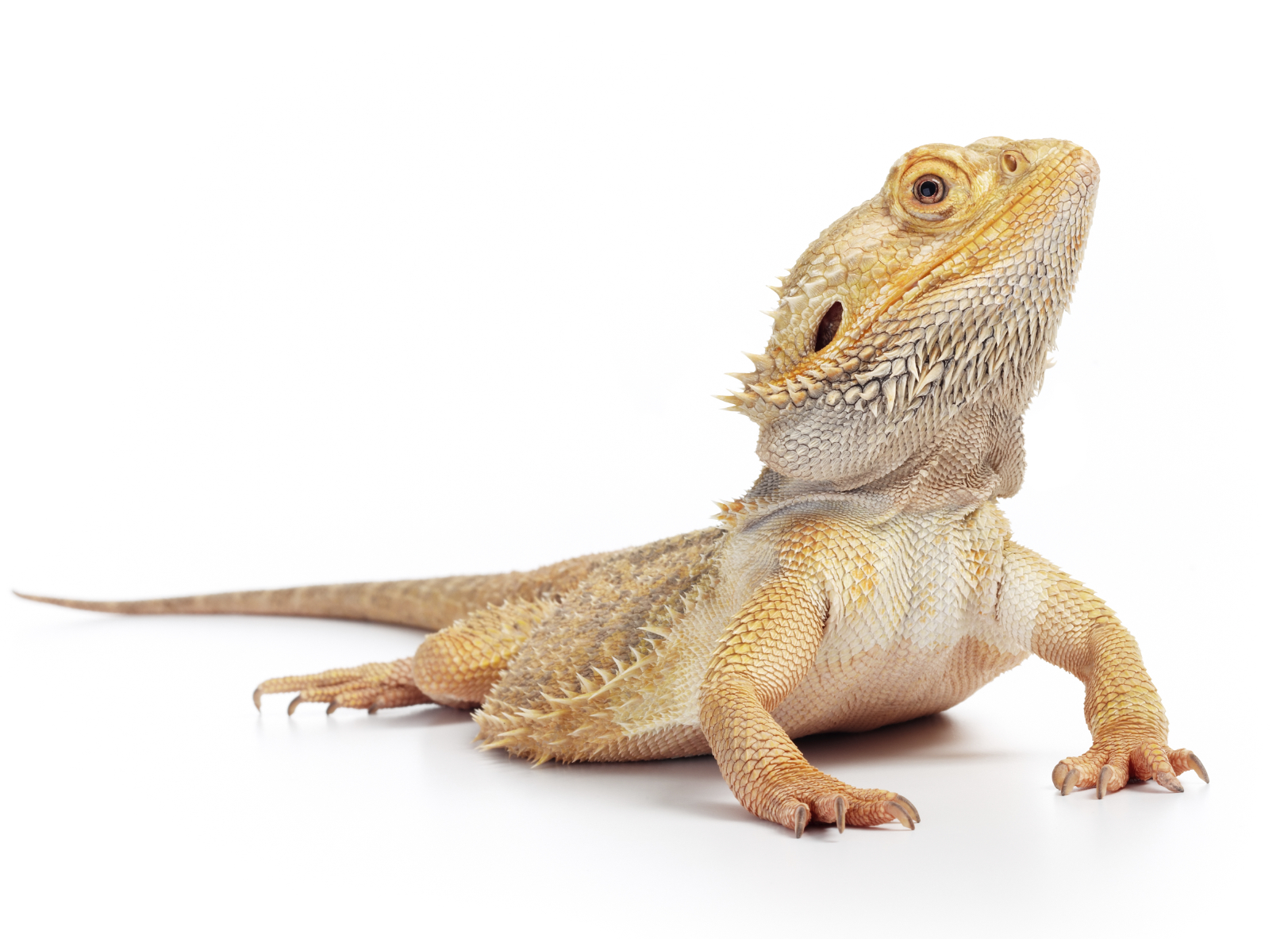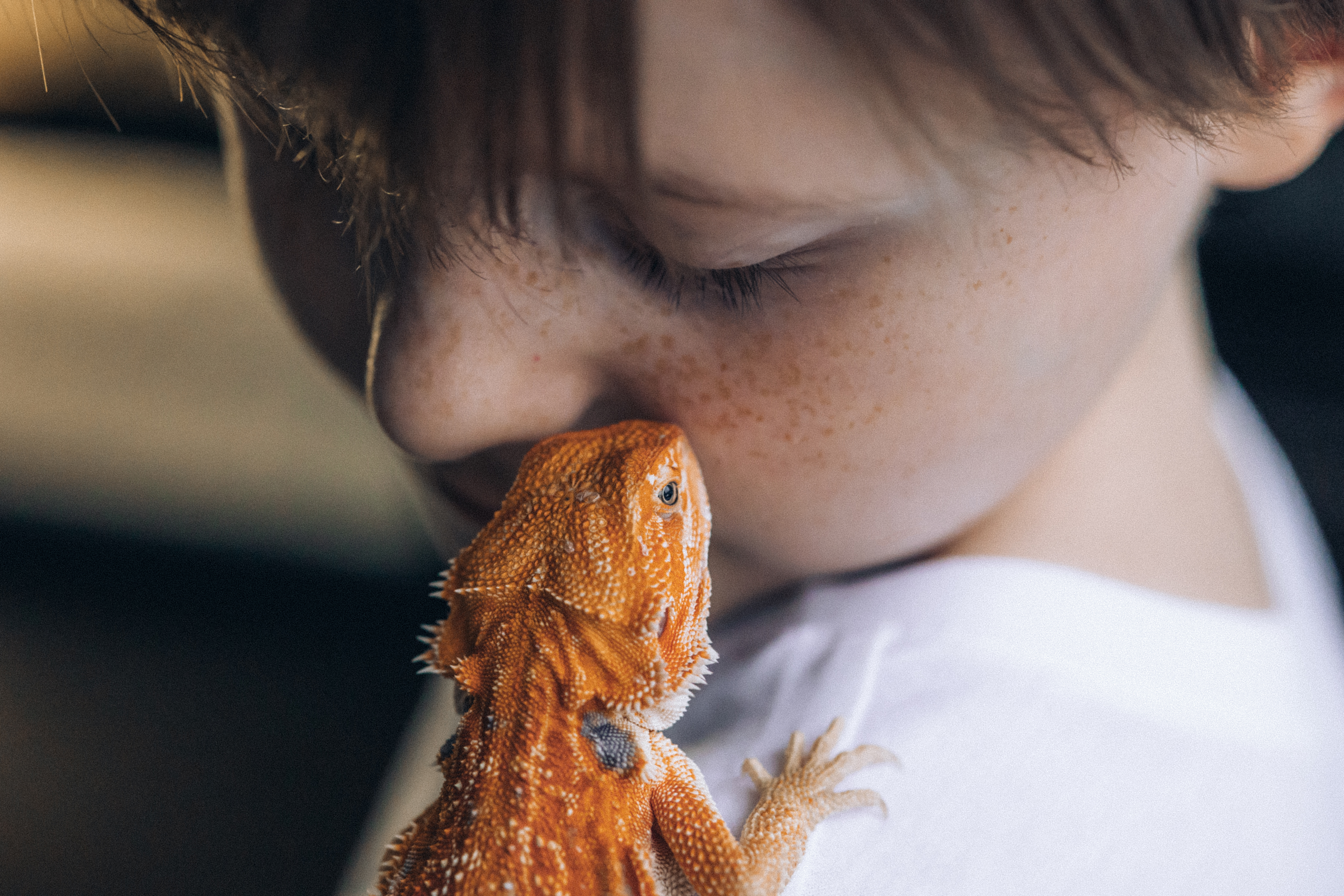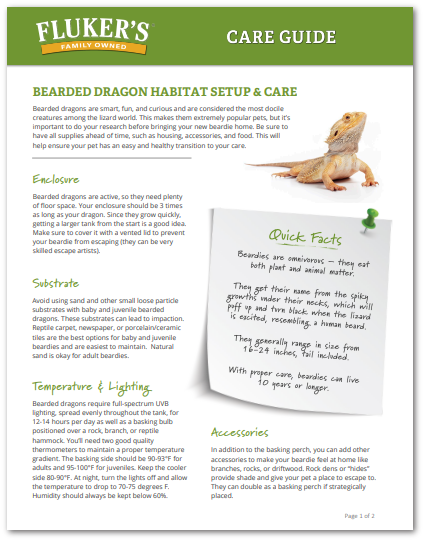How to Care for Your Bearded Dragon
Posted by The Fluker's Team on Jun 28th 2024

Bearded Dragon Fun Facts
- Bearded dragons originate from the dry bushland and desert regions of Australia. They first introduced to the United States around 1990.
- Many pet owners affectionately call bearded dragons "beardies," and their scientific name is Pogona.
- Beardies are omnivorous; they eat both plant and animal matter. While their diet consists mostly of plants and vegetables, the also love insects including crickets, roaches, and mealworms.
- Bearded dragons get their name from the spiky growths under their necks. These will puff up and turn black when the lizard is excited, looking like a human beard.
- Beardies will wave to each other! Scientists think that smaller lizards show they are submissive when a bigger or more dominant lizard is close by.
- They show they like each other by nodding their heads. The male nods quickly and the female nods slower in response.
- Although normally calm and sedentary, bearded dragons are deceptively quick and are capable of running up to 9 mph. They can even run on two legs!
- Bearded dragons are medium-size desert lizards and range from red to brown to yellow to white in color. They have a limited ability to change their colors. Softer colors reflect most of the sunlight, which helps them regulate their body temperature.
- On average, they measure between 16 and 24 inches and weigh 10 to 20 ounces.
- Bearded dragons have a tail that is almost as long as its body! Females have thinner and more slender tails than males.
Beardies as Pets

Bearded dragons make great pets and are arguably the most popular and sought after species among reptile hobbyists. They enjoy being held and excel at interacting with others, which makes them good companions for kids. They also show great tolerance towards other animals, just as they do towards humans.
Dragons will establish their own routine. They have a curious and friendly nature, and they often approach their owners for attention and interaction. Spending time with your beardie regularly is important because they enjoy being around people. When handled often, they can develop strong connections with their owners.
Bearded dragons are interesting pets that bring happiness and companionship to their owners.
What is the Bearded Dragon's Life Span?
Bearded dragons can live up to 10 years or more with good care and a healthy environment.
Caring for bearded dragons is easy once you set up their habitat, despite the initial investment needed. They have simple dietary needs and can thrive on a diet of insects, vegetables, and fruits. To keep your pets healthy, provide them with sufficient heat and light. Also, make sure they have a spacious enclosure with areas for basking and hiding.
Bearded dragons make great pets for those wanting an easy-to-care-for reptile friend that lives a long time. With the right care and attention, these fascinating creatures can bring joy and companionship for many years to come.
Bearded Dragon Setup and Care 
If you have a pet beardie or are considering one, check out Fluker's Reptile U resources.
Learn how to set up and care for your Bearded Dragon with our guide and video tutorials. Get tips to keep your pet happy and healthy. Topics covered include enclosure, substrate, accessories, temperature, lighting, diet, nutrition, growth, behavior, handling, and safety.

